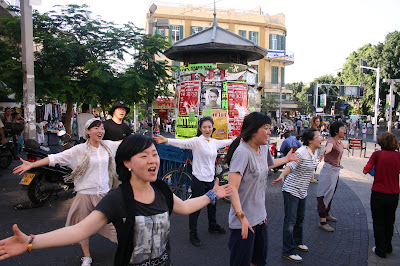Cultural
and Social Epidemics
Did
you know that there are social and cultural epidemics that spread in the
same way as many biological and chemical diseases do? This is the overarching
thesis behind the book "Connected",
now making a worldwide buzz due to its groundbreaking approach on
"networking".
According
to the authors, the only way we can understand how certain attitudes or idea
spread out is through the connections between people (Think "The
Tipping Point"). The structure of networks also helps us determine how it
is that people interact, allowing for a deeper understanding of our surroundings
and ourselves.
In
networks with a high degree of transitivity (interconnections), innovation
and creativity are barely ever present. The positive side is that in these
groups there is a strong sense of identity and a strong support
system: close circle of friends, family, tight-knight community, etc.
HOWEVER,
due to the high level of connectivity within them, in these groups, gossip ends
up spreading like a wild fire. If someone gets a social, biological or cultural
disease he can spread it to the whole network in a matter of seconds. In Mexico
we have a phrase to describe these types of situations: "Small town,
big hell". It’s the type of situation where everyone behaves the same, and
sticks their nose in everyone else’s business.
Networks
with a low degree of transitivity are characterized by the interaction of
different social groups. If you happen to be a member of many social groups
that are not connected to each other, you can be catalyst for creative
change and innovation .In other words, you are a connector, and this allows you
to have the human (social) capital that will enable you to create new projects
and innovate in different arenas.
The
downside of being a part of open networks is that a bad idea, or a
virus, can hardly be contained. Whereas in the close-knighted network members
infected by the disease can spread the disease to members of the same network,
in an open network you are constantly spreading the disease to new networks.
Thus infecting everyone around.
We’re
all living in the boom of what is called the "networking" generation
(by me : ) ). Thus, having a clear idea of who you’re friends are and what
type of network you belong to can help you understand what is your role in
society at large.
Are
you a connector or a gossiper? Do you help bring new ideas to close knight
circles or do you retain those ideas to create support for future community
development?
These
are important questions to ask, especially in an age and time when information
is epidemic and age-old traditions are opening up to the world at large, all of
these being the results of hyper connectivity.
ps.
If you want to find out more about the connections within your facebook network
and what the structure of the connection actually says about you I strongly
suggest using the "Friend Wheel" application.








